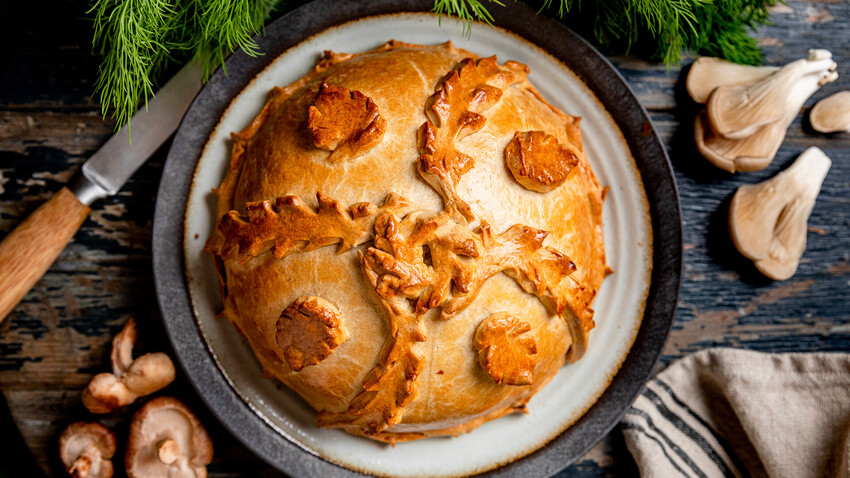
In the old days, a kurnik pie could replace a wedding day wish card. Many symbols were hidden in its adornment and composition.
Yulia MulinoIn Russia, it’s customary to prepare special dishes for weddings (check out all of them here). One such dish is the kurnik - a large, domed, ruddy and shiny multi-layered pie. The word “kurnik” most likely comes from the Russian word for “chicken” (kuritsa), which is one of the ingredients. According to another version, the pie was so called because hot steam comes out (kuritsya) from the hole in the middle of the pie.
The bride and groom's parents present the kurnik to newlyweds on their wedding day. It's more than just a treat, it's full of symbols, both in how it’s adorned and in the filling.
The groom is given a kurnik, decorated with human figures, which means wishing for a big family. For the bride, it’s decorated with flowers and plant motifs to symbolise beauty and fertility.
The filling of the pie also has meaning: grain is a symbol of prosperity, chicken and egg symbolize continuity of the family, while the flour symbolizes harmony and life.
Although traditional kurnik has three fillings: grits (rice or buckwheat), chicken and mushrooms, there are many variations. For example, instead of grits I put potatoes and mushrooms and cabbage, and even without chicken. I chose rice, mushrooms and egg as the filling. It's more tender and a little lighter than the chicken.
In southern Russia they bake it with chicken; in northern Russia, with fish. To add flavor and juiciness to the filling ingredients, fried onions and carrots, eggs and fresh herbs are used. In some recipes a cream sauce is added. Gentle bliny (crepes) separate the layers. All this splendor is placed in shortbread dough, which forms a crispy crust after baking.
Making a kurnik is a laborious task that requires time. It is a splendid addition that will brighten up any wedding or holiday feast. Your guests will certainly be delighted! Fun fact: According to legend, kurnik is considered to have been one of the favorite dishes of Ivan the Terrible.
So if you want to make a meaningful gift for newlyweds or just surprise your guests, let’s make a kurnik. The more layers and fillings, the better!
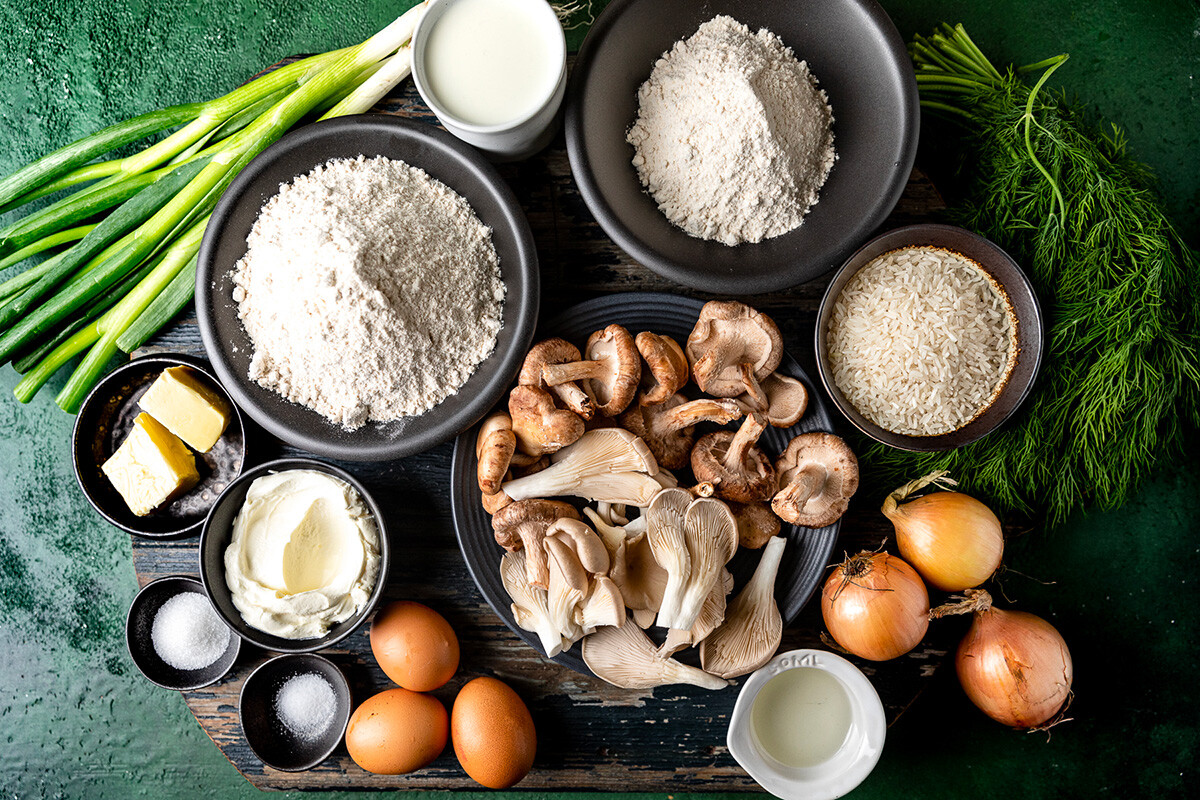
Dough (for a 20 cm pie):
Pancakes (6-8 pcs 18 cm):
Filling with mushrooms:
Rice filling:
Egg stuffing:
For the cake grease:
1. It’s best to start the process by preparing the fillings. Boil the rice. I took a cube of mushroom broth to make it more flavorful, but it’s up to your taste. If you don’t add a cube, then salt your rice.
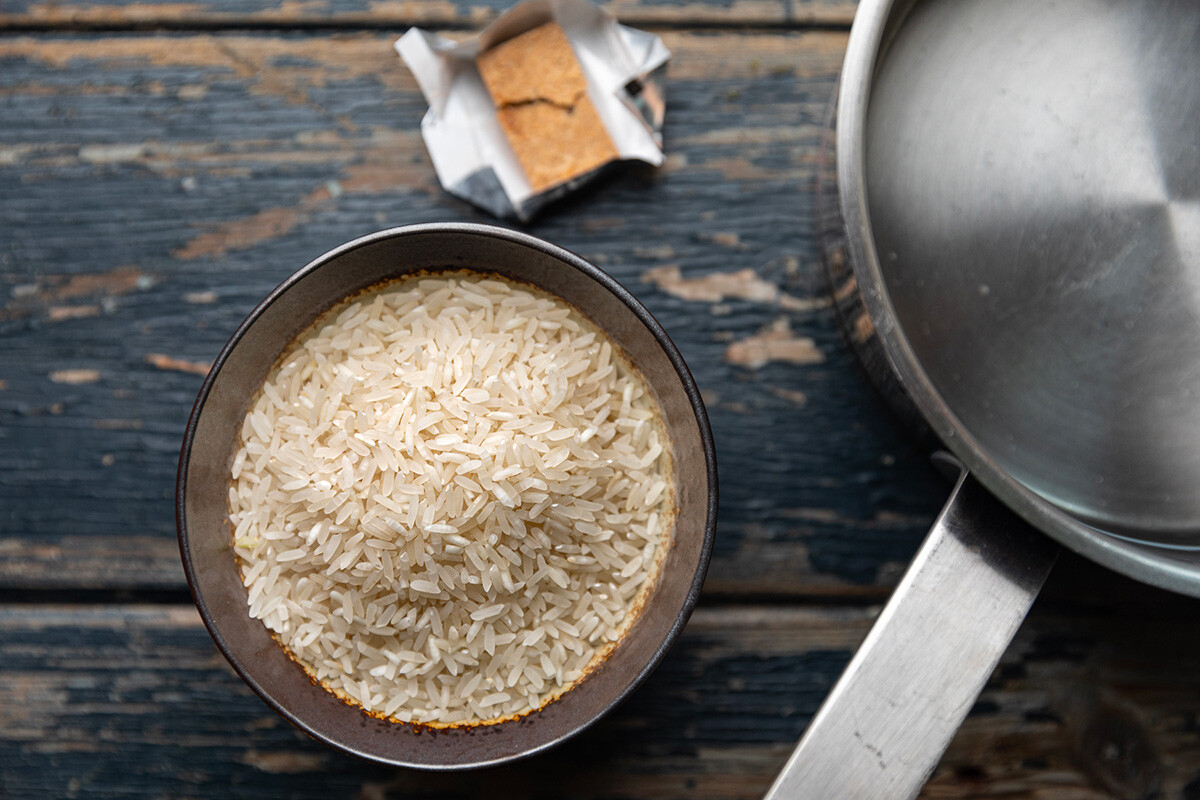
2. Boil 4 eggs. Crush a boiled egg (you’ll need 3 eggs for filling at point 6) with a fork and add it to the rice along with the dill. Finely chop onion and fry until transparent. Add to the rice mixture.
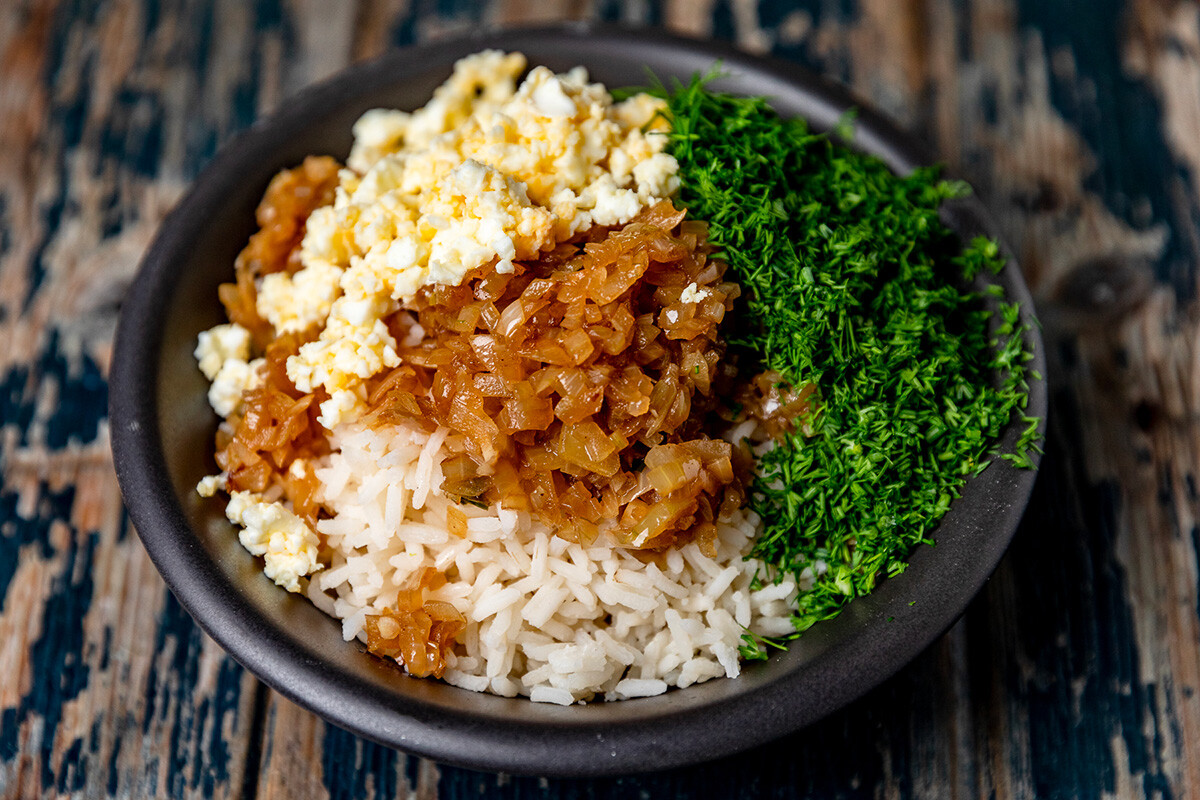
3. For the mushroom filling, chop the onion finely and fry in oil and butter until soft.
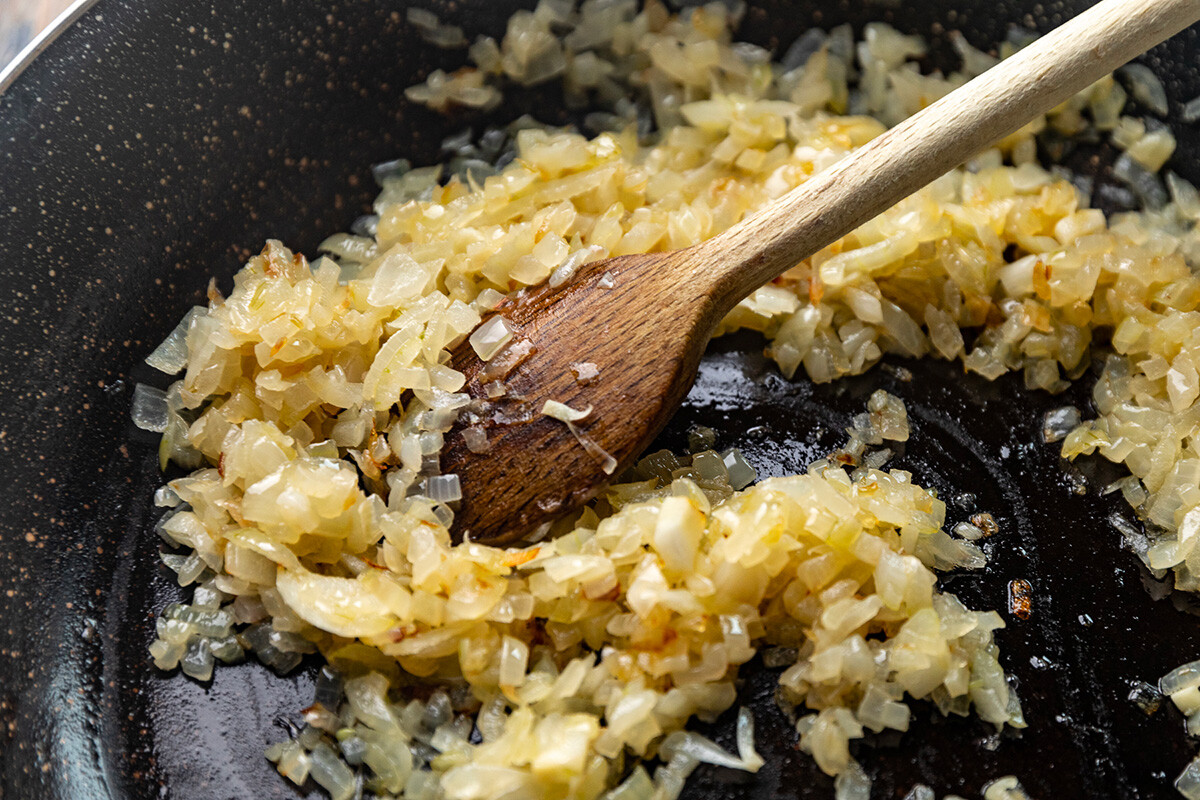
4. Dice the mushrooms and add to the onions.
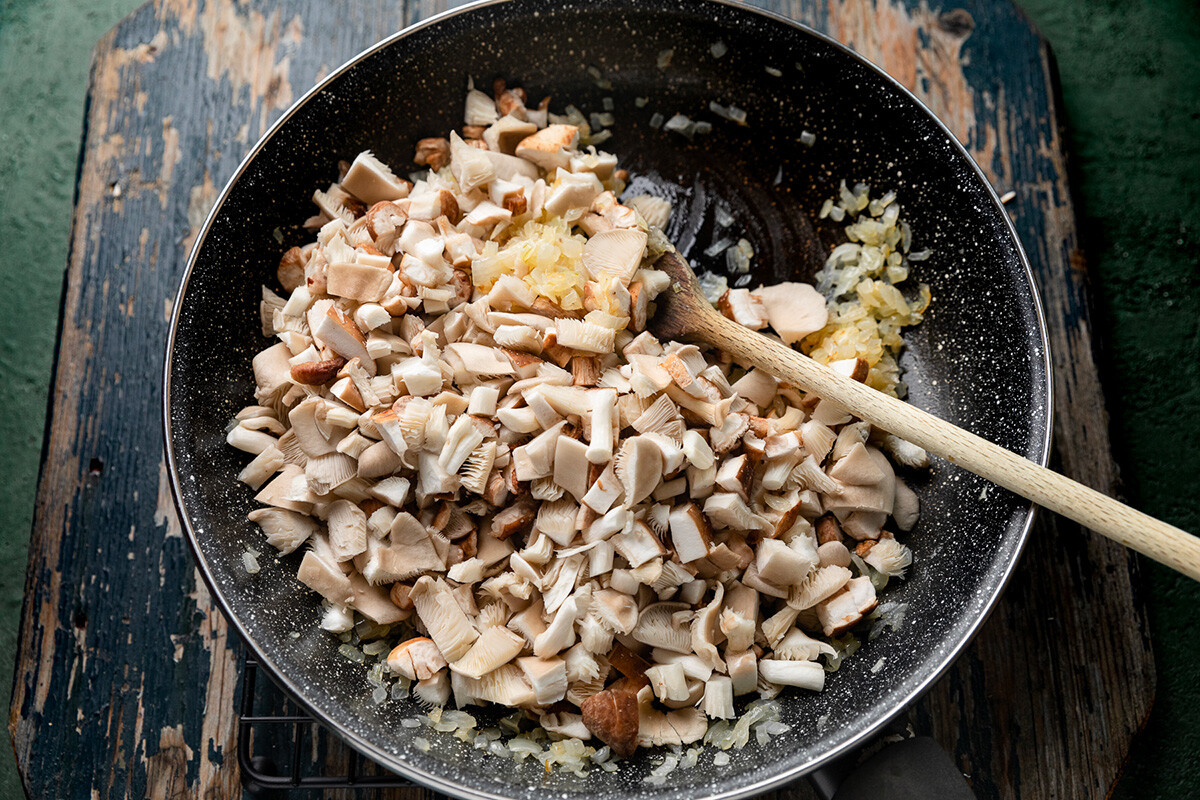
5. Saute until soft, about 7 to 10 minutes. Season with salt and pepper to taste. Set them aside to cool.
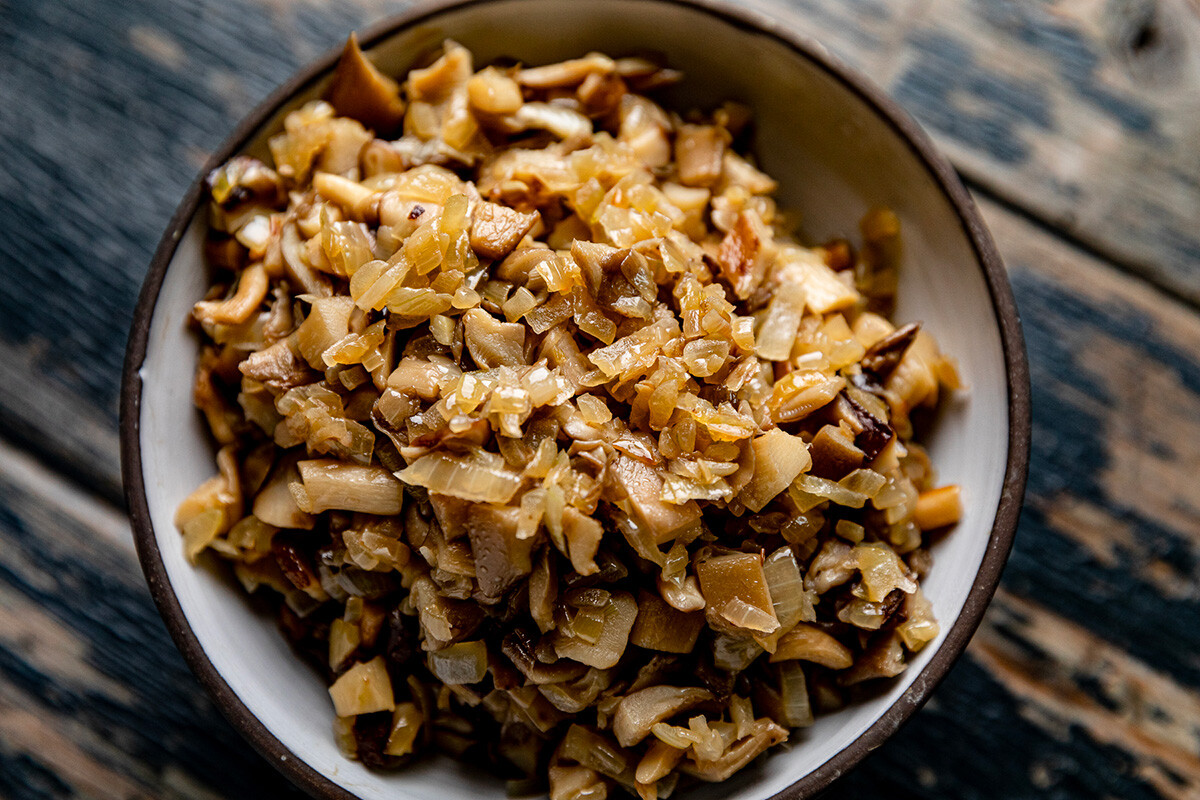
6. Chop 3 boiled eggs finely. Chop the green onions and fry until soft. Salt and pepper to taste.
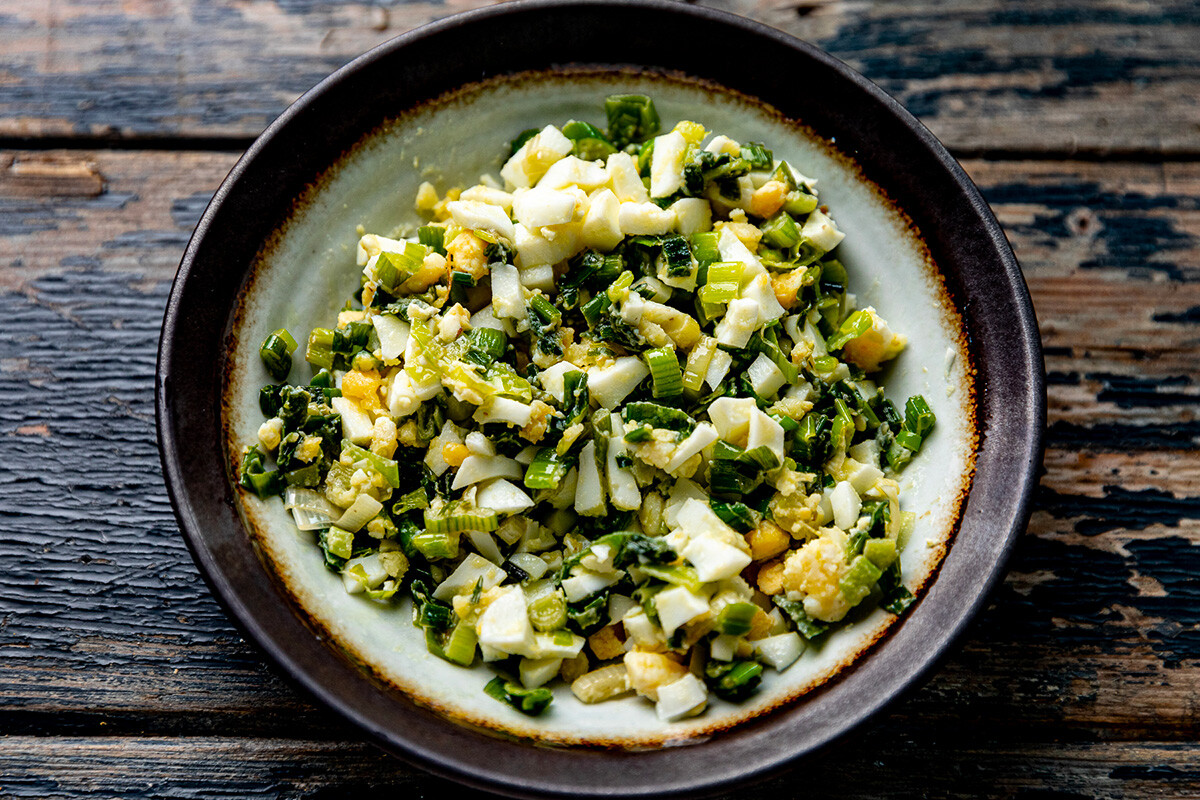
7. Place all the ingredients for the dough and knead into a soft, fluffy dough.
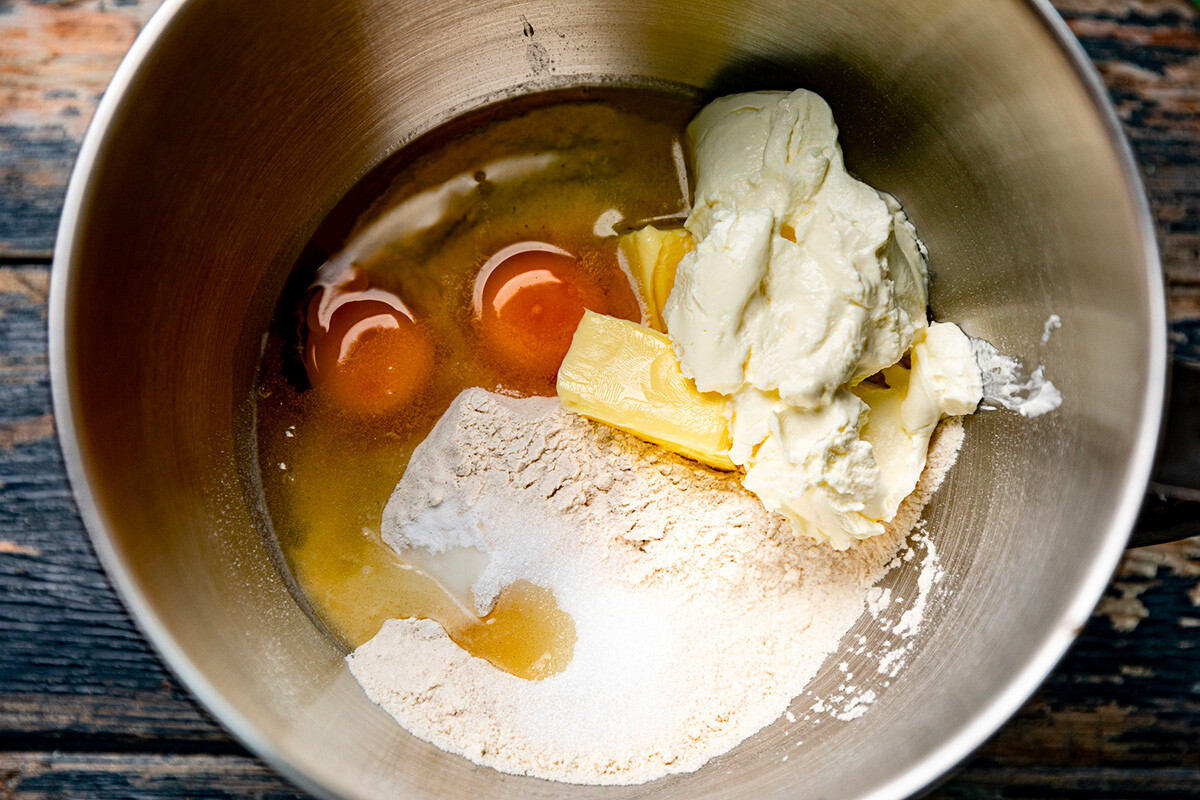
8. Cover with cling film and leave to rest for 30-40 minutes.
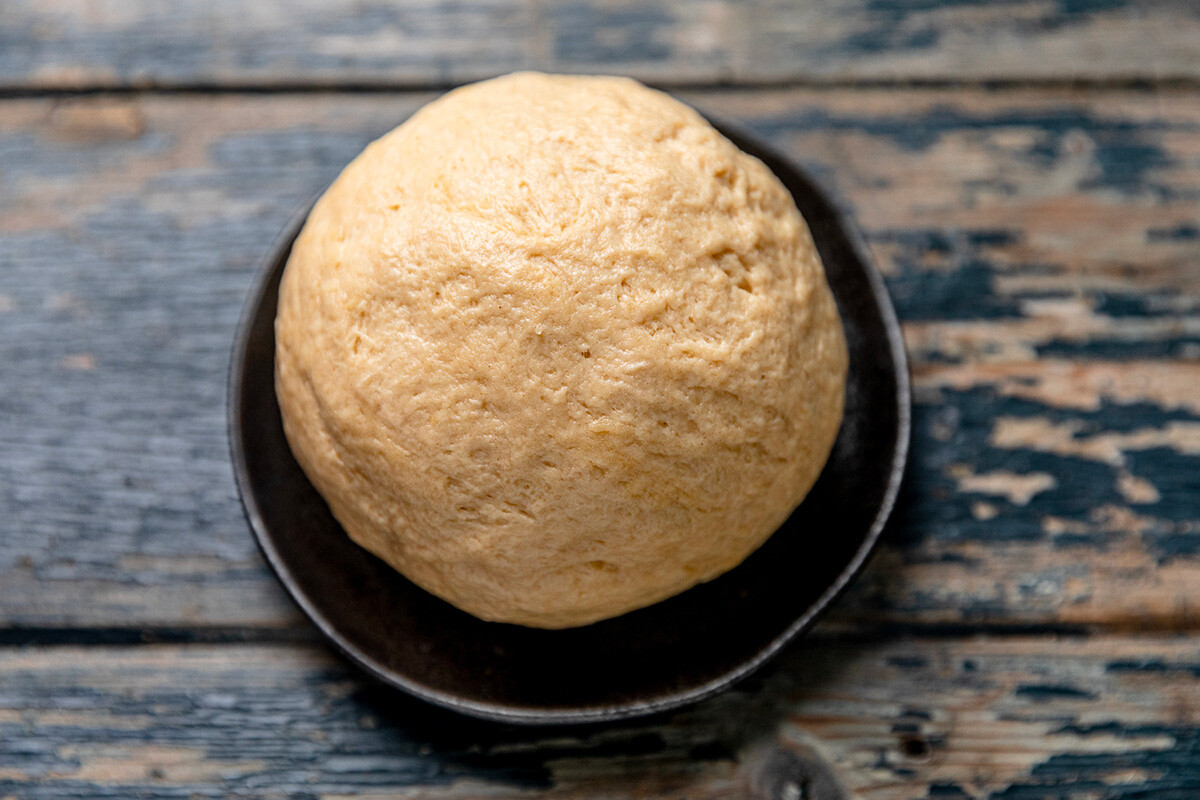
9. For the pancake batter, place egg, salt, sugar and 1/2 part milk in a deep bowl. Add the flour and mix thoroughly so that there are no lumps. Add remaining milk. Add oil to the batter and mix thoroughly before frying.
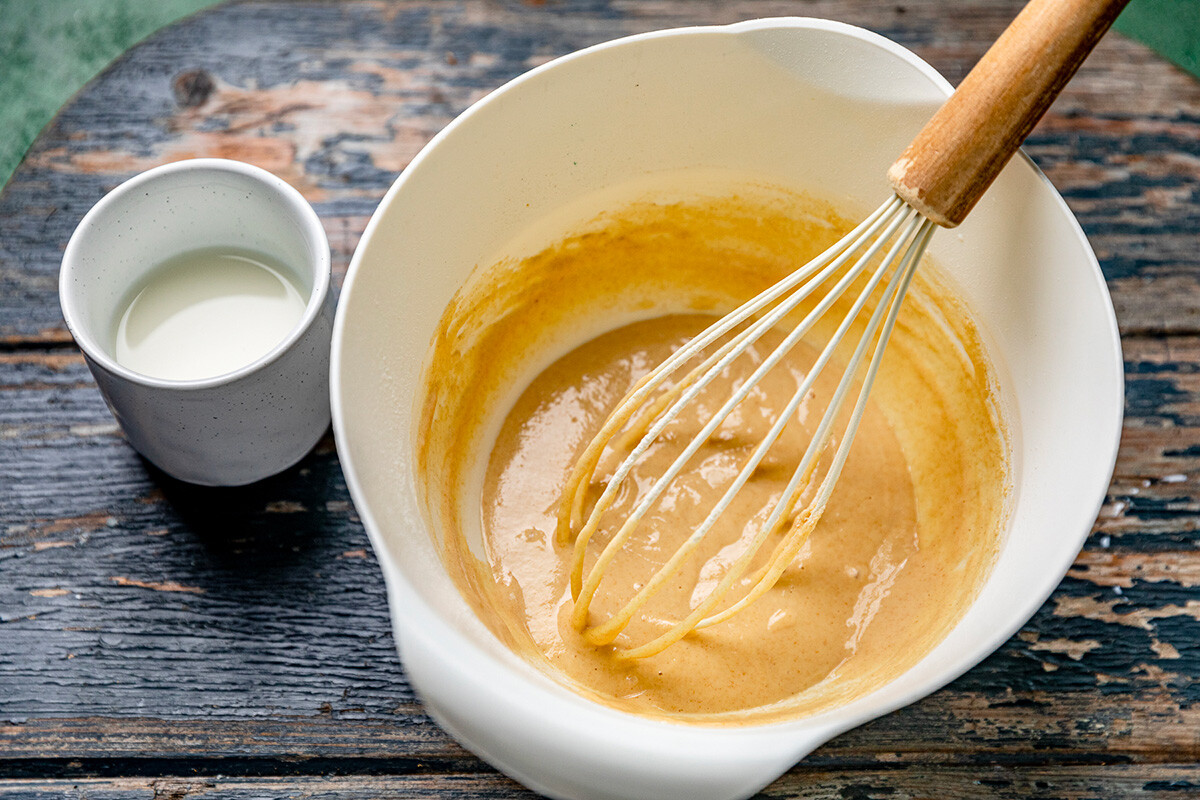
10. Bake the bliny on a hot griddle. I made 7 bliny (crepes) 18 cm in diameter.
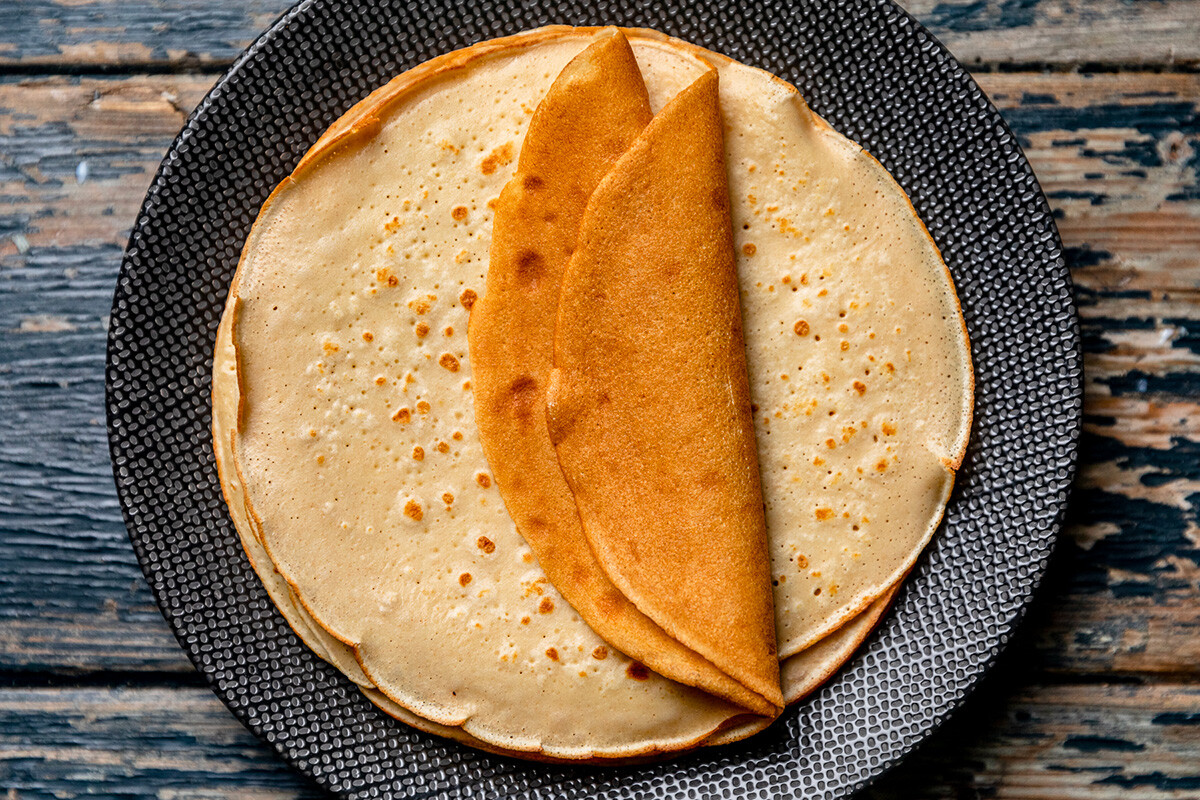
11. Divide the dough into three portions: one small portion for the decoration and two equal portions for the bottom and top of the cake.
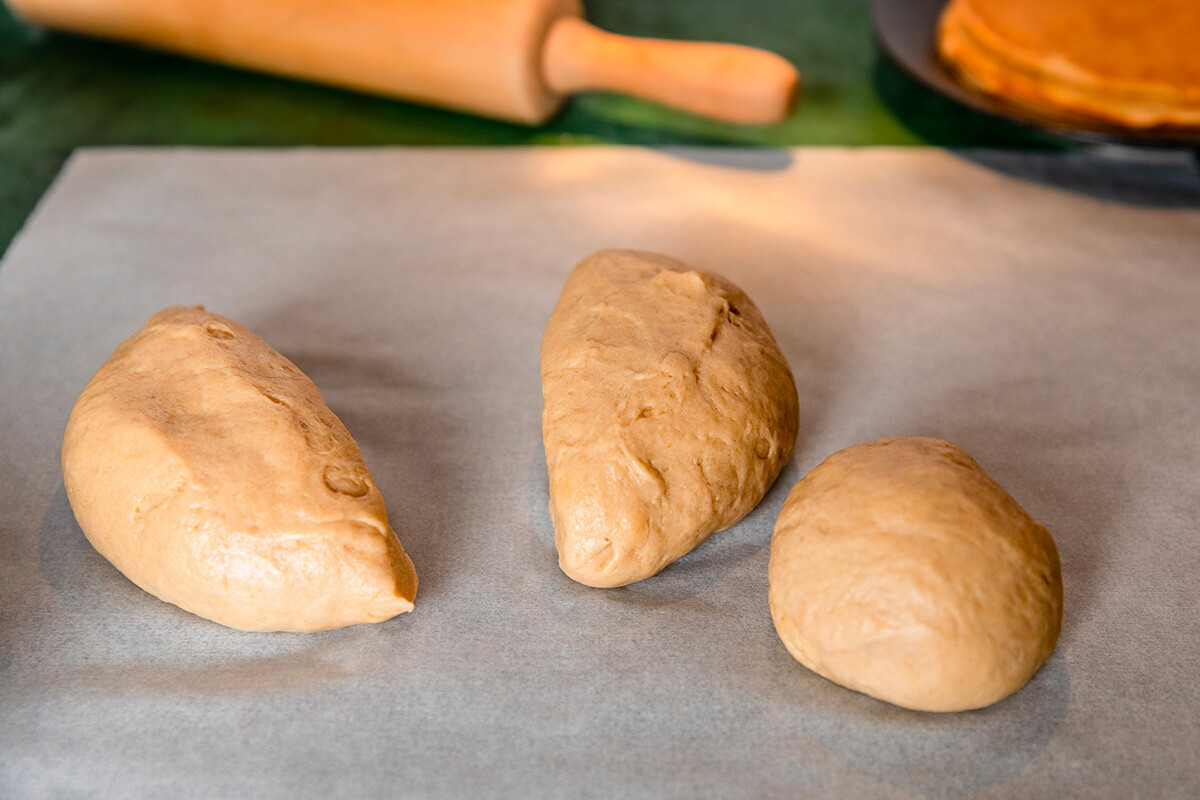
12. On a baking paper, roll out the larger part to a sheet slightly larger than the diameter of the bliny. Place the first blin.
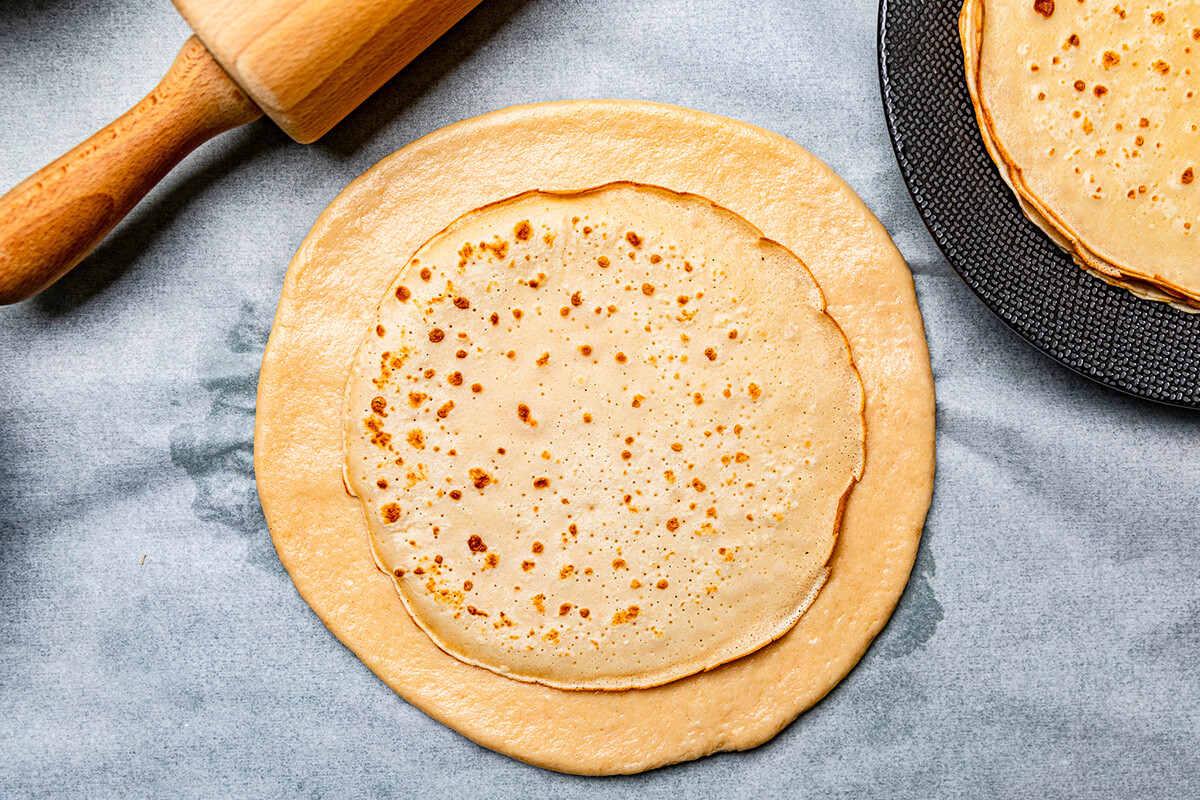
13. Put the rice filling on it. You could put small pieces of butter on top for juiciness. But I had a lot of butter in my onion stir-fry, so I didn't do that.
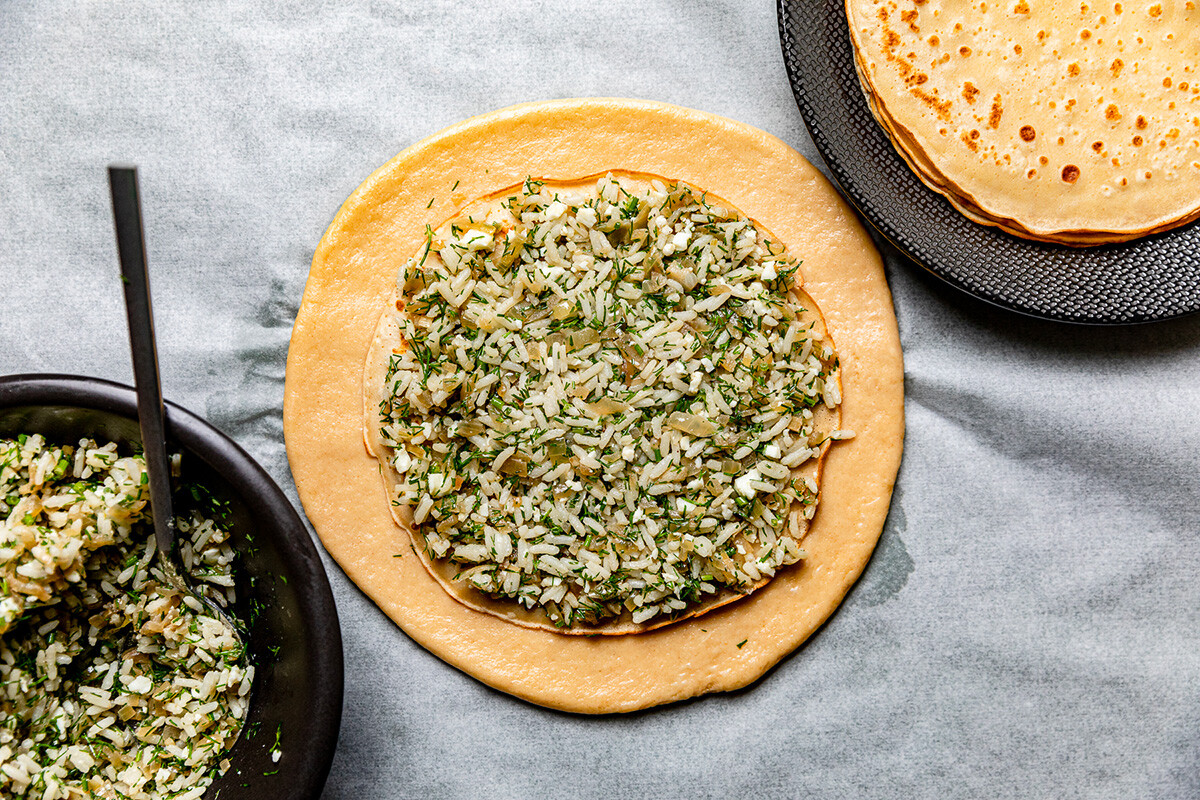
14. Cover with a blin and put the mushroom filling on top.
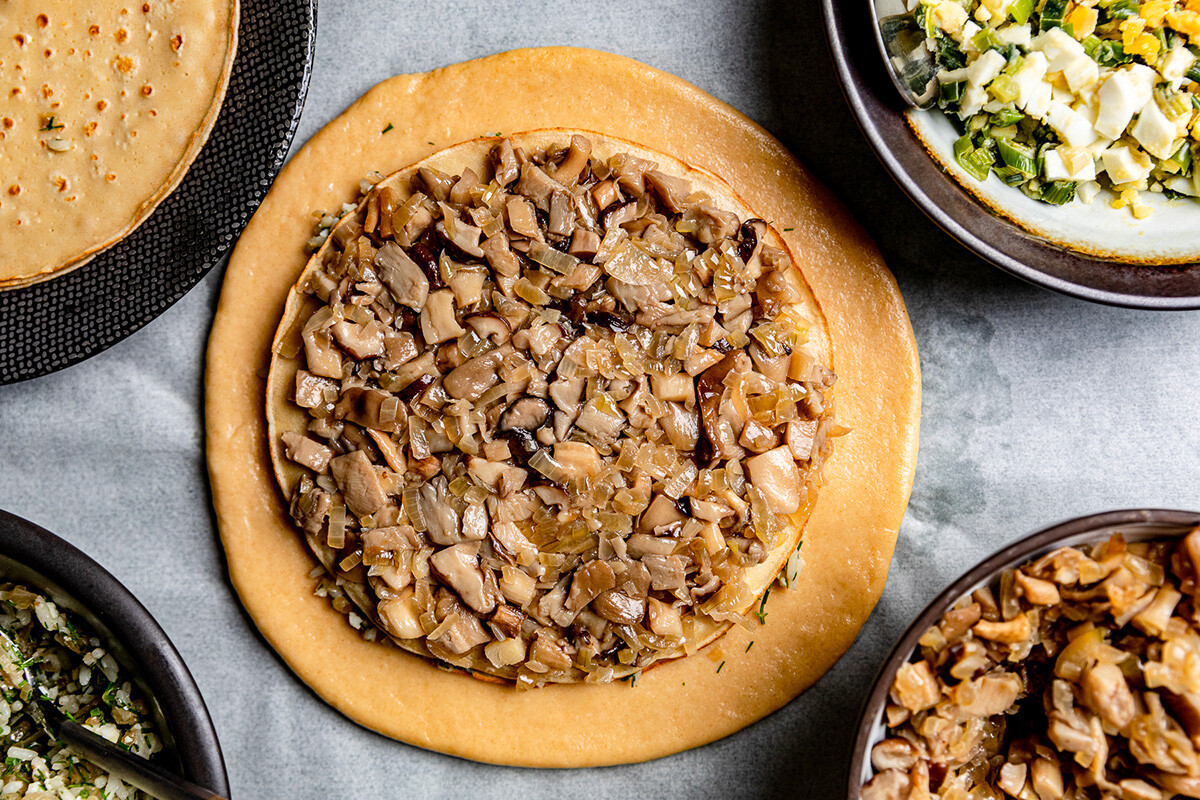
15. Continue with the egg stuffing. Repeat until all bliny and filling are done.
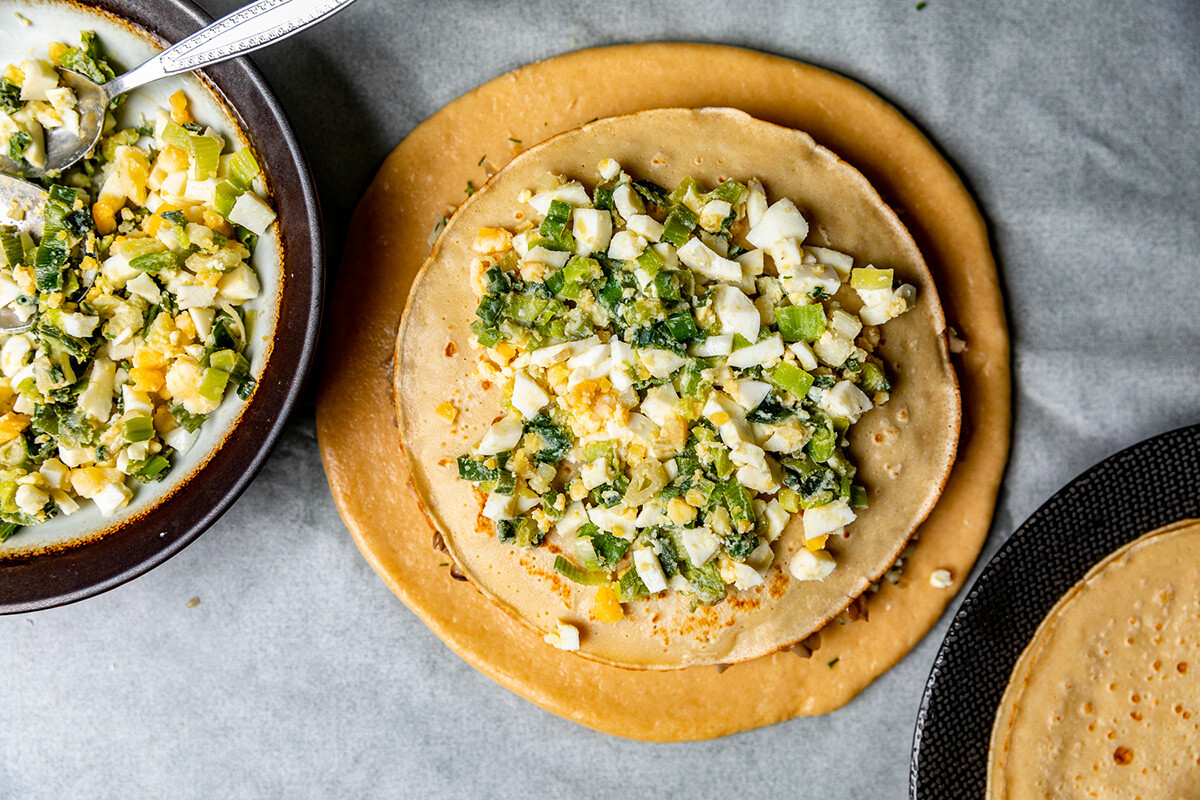
16. The last few layers have less filling to make a spherical shape. Finish with the blin so that the top layer of dough lies flat.
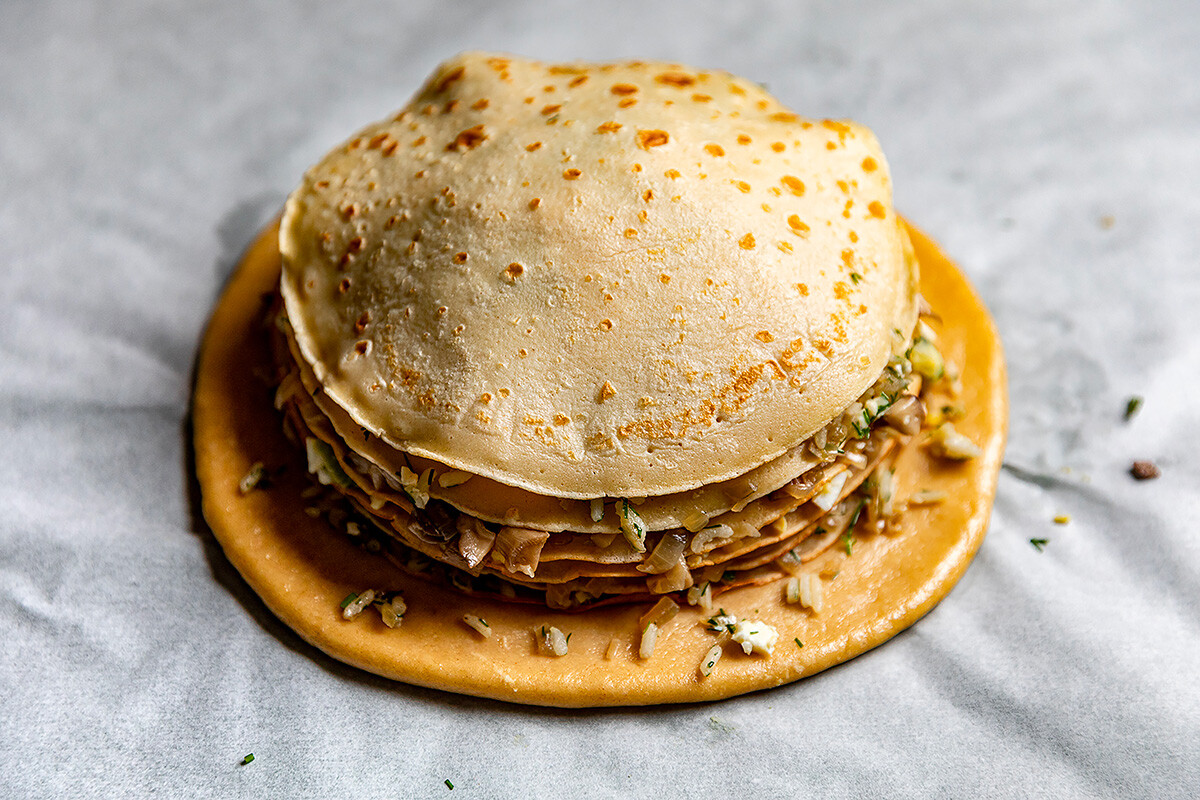
17. Roll out the second large piece of dough and cover the cake. Pinch the edges together.
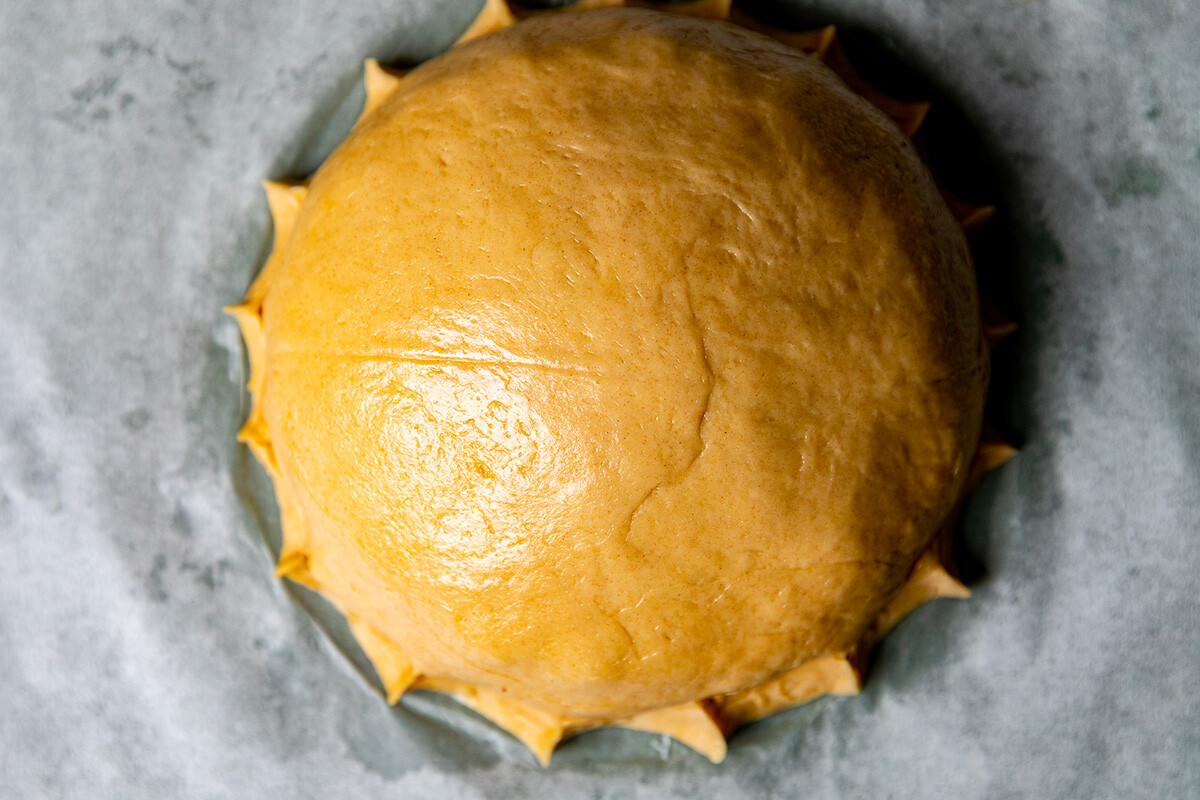
18. Decorate with the rest of the pastry, if desired.
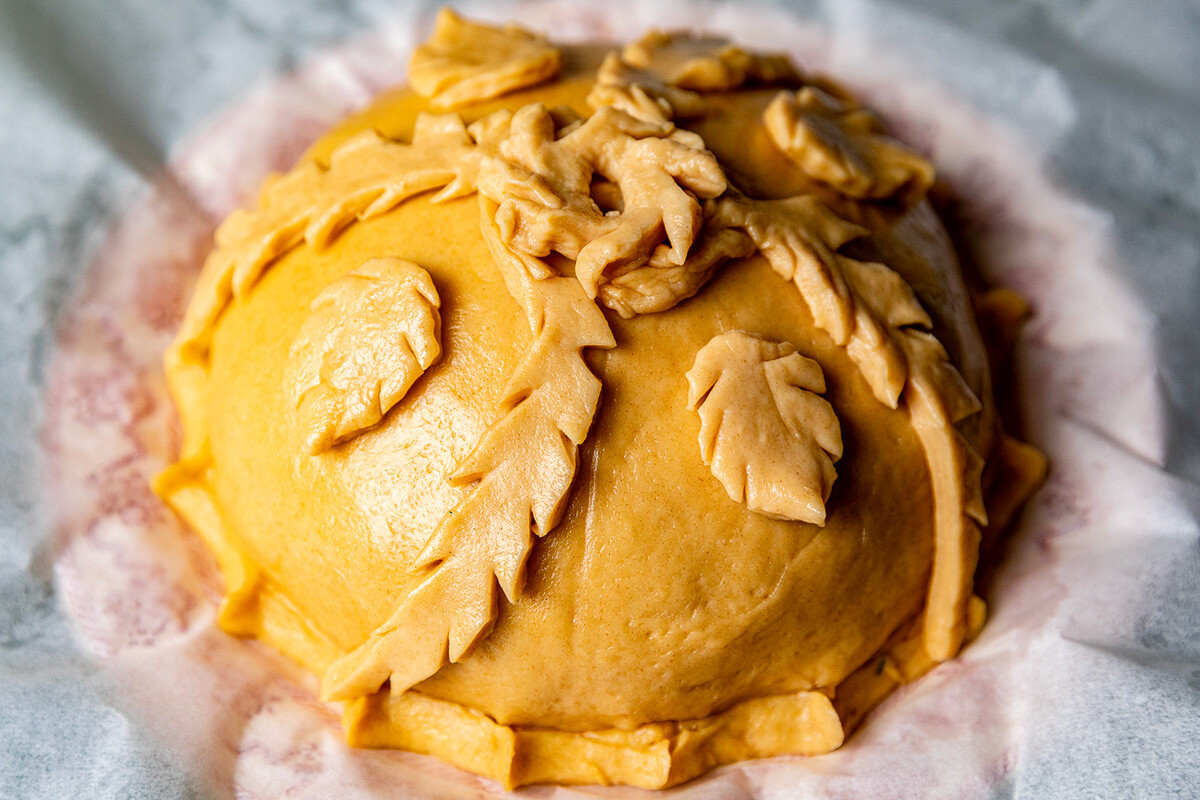
19. Brush the cake with egg. Bake in a preheated oven 180°C for 30 minutes. It's best served hot, but it will also be delicious when slightly cooled. Enjoy!
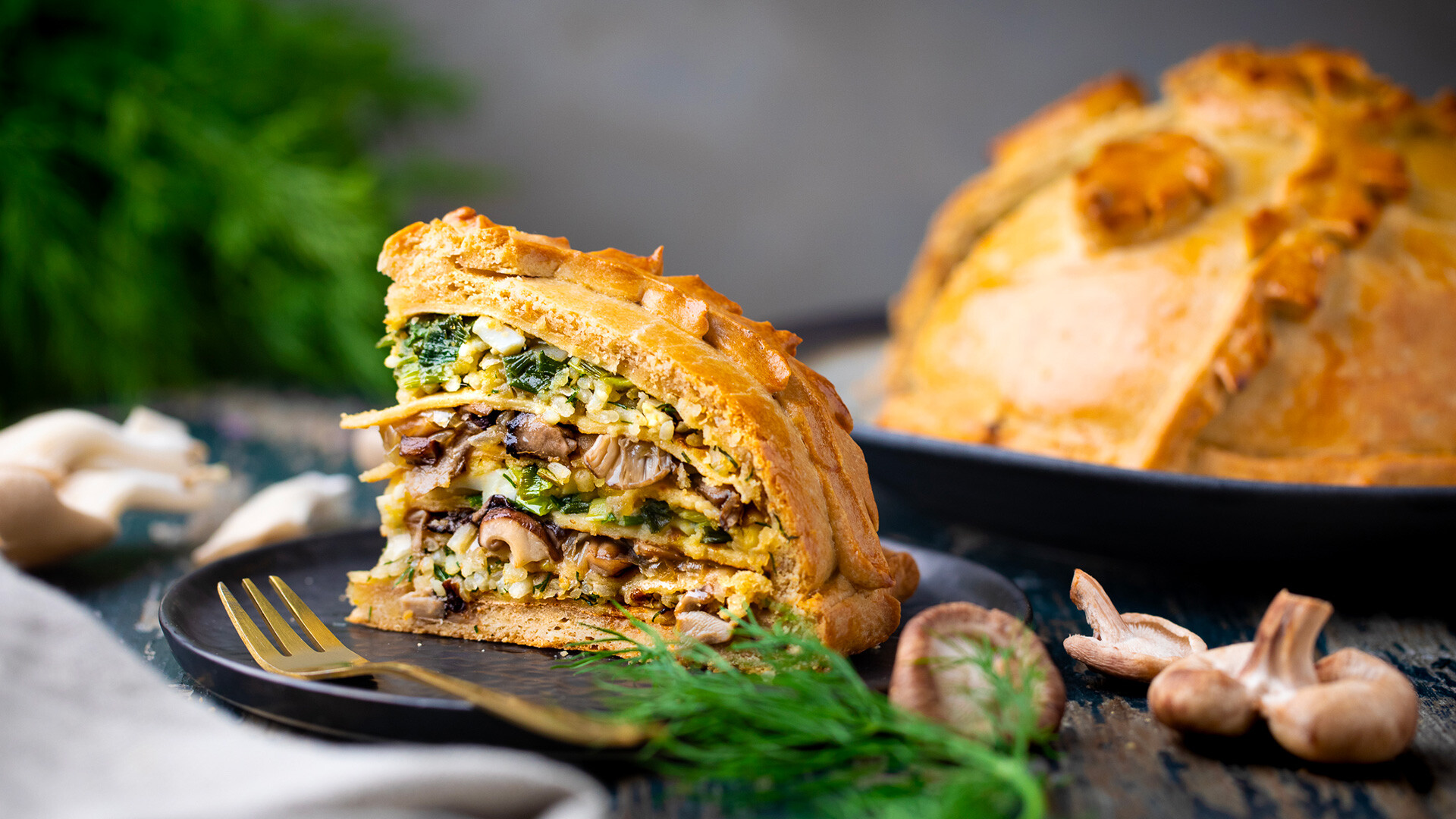
Dear readers,
Our website and social media accounts are under threat of being restricted or banned, due to the current circumstances. So, to keep up with our latest content, simply do the following:
Subscribe to our Telegram channels: Russia Beyond and The Russian Kitchen
Subscribe to our weekly email newsletter
Enable push notifications on our website
Install a VPN service on your computer and/or phone to have access to our website, even if it is blocked in your country
If using any of Russia Beyond's content, partly or in full, always provide an active hyperlink to the original material.
Subscribe
to our newsletter!
Get the week's best stories straight to your inbox